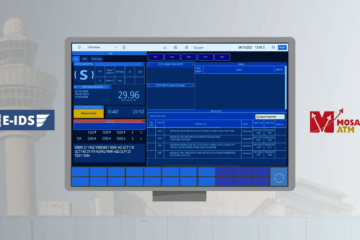Mosaic ATM has received a NASA Phase II SBIR award to prototype a new tool that uses deep learning systems to predict the signal strength at a low altitude of an Advanced Air Mobility (AAM) vehicle (think: flying taxis). The Machine Learning system is trained using high-fidelity physics-based simulated data and actual data recorded from test flights. Using a combination of Convolutional Neural Nets and Deep Learning systems, the accuracy of the estimation will be high, with a speed that is about ten times faster than current physics-based algorithms, and will be applied to the low-altitude UAM communications system.
The goal is to produce a quick and reliable signal strength estimate for an advanced air mobility vehicle within four minutes. The estimate will consider atmospheric effects, transmitter power, Doppler shifts, multipath interference, terrain obstructions, and many other effects. This tool is an example of training a Machine Learning system to “understand” physics, such as signal propagation. The applications are many: pre-flight planning, route contingency management, transmitter health status, transmitter location placement, and many others.
The project’s Principal Investigator is Dr. Frederick Wieland, the Chief Research Scientist at Mosaic ATM. Mosaic ATM has provided services to NASA since the earliest days of Mosaic in 2004 through Small Business Innovative Research (SBIR) contracts and NASA Research Announcement (NRA) contracts. This exemplary performance reflects the entire Mosaic ATM team, including the personnel working on each project.


